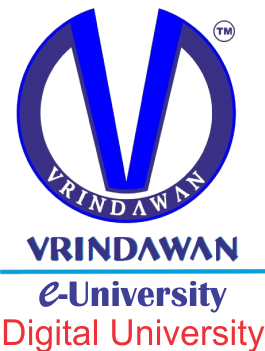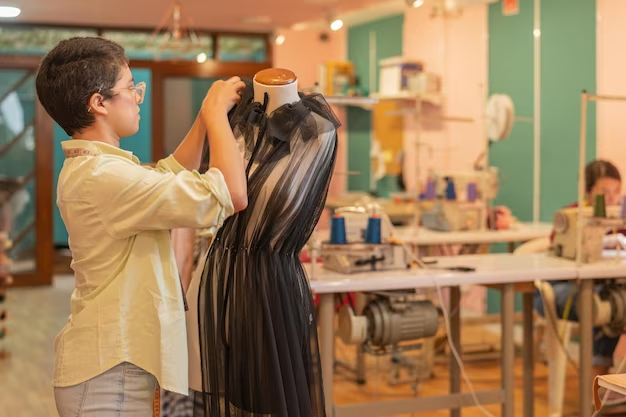Textile management is an interdisciplinary research subject where management issues in the textile and fashion industry (i.e. the value chain of textile products from concept to customer) are studied. Textile management can be described as studies of practices related to the textile and fashion industry, including studies of the organization and management of textile and fashion-related supply and demand chains, including design and product design, product development, production and manufacturing processes, procurement, distribution and logistics, marketing, market communication and merchandising, retailing, consumer analyses, consumer behavior, sustainability etc. The reverse flow is also addressed, the aim of which is to recreate lost value, such as returns management, organization of recycling and reuse, etc.
Researchers within Textile management have different backgrounds and the diversity mirrors the wide range of perspectives. Thus, Textile management is a multi- and interdisciplinary research area, i.e. a cluster of fields, which borrows different theoretical lenses and uses them in an applied setting. Researchers study different phenomenon, from entrepreneurship and innovation to integration of sustainability within the industry and local production of fashion. The diversity is also mirrored in used research methods and views of knowledge. Qualitative methods (e.g. to understand ethics and moral within supply chains and local, slow production) as well as quantitative methods (e.g. to develop traceability systems).
The discipline of Textile Management and related subjects (i.e. Textile and Apparel Management (TAM) and Fashion management) is a word wide area of education that, along similar lines, focuses on the study of textile & fashion businesses and value chains, entrepreneurship and consumers. There are educations at both bachelor (B. Sc), master (M. Sc.) as well as Doctor of Philosophy (Ph. D) levels in different countries such as Sweden, France, Romania, USA and UK.
Textile
Textile is an umbrella term that includes various fiber-based materials, including fibers, yarns, filaments, threads, different fabric types, etc. At first, the word “textiles” only referred to woven fabrics. However, weaving is not the only manufacturing method, and many other methods were later developed to form textile structures based on their intended use. Knitting and non-woven are other popular types of fabric manufacturing. In the contemporary world, textiles satisfy the material needs for versatile applications, from simple daily clothing to bulletproof jackets, spacesuits, and doctor’s gowns.
Textiles are divided into two groups: Domestic purposes [consumer textiles] and technical textiles. In consumer textiles, aesthetics and comfort are the most important factors, but in technical textiles, functional properties are the priority.
Geotextiles, industrial textiles, medical textiles, and many other areas are examples of technical textiles, whereas clothing and furnishings are examples of consumer textiles. Each component of a textile product, including fiber, yarn, fabric, processing, and finishing, affects the final product. Components may vary among various textile products as they are selected based on their fitness for purpose.
Fiber is the smallest component of a fabric; fibers are typically spun into yarn, and yarns are used to manufacture fabrics. Fiber has a hair-like appearance and a higher length-to-width ratio. The sources of fibers may be natural, synthetic, or both. The techniques of felting and bonding directly transform fibers into fabric. In other cases, yarns are manipulated with different fabric manufacturing systems to produce various fabric constructions. The fibers are twisted or laid out to make a long, continuous strand of yarn. Yarns are then used to make different kinds of fabric by weaving, knitting, crocheting, knotting, tatting, or braiding. After manufacturing, textile materials are processed and finished to add value, such as aesthetics, physical characteristics, and increased usefulness. The manufacturing of textiles is the oldest industrial art. Dyeing, printing, and embroidery are all different decorative arts applied to textile materials.
Etymology
Textile
The word ‘textile’ comes from the Latin adjective textilis, meaning ‘woven’, which itself stems from textus, the past participle of the verb texere, ‘to weave’. Originally applied to woven fabrics, the term “textiles” is now used to encompass a diverse range of materials, including fibers, yarns, and fabrics, as well as other related items.
Fabric
A “fabric” is defined as any thin, flexible material made from yarn, directly from fibers, polymeric film, foam, or any combination of these techniques. Fabric has a broader application than cloth. Fabric is synonymous with cloth, material, goods, or piece goods. The word ‘fabric’ also derives from Latin, with roots in the Proto-Indo-European language. Stemming most recently from the Middle French fabrique, or “building,” and earlier from the Latin fabrica (‘workshop; an art, trade; a skillful production, structure, fabric’), the noun fabrica stems from the Latin faber” artisan who works in hard materials’, which itself is derived from the Proto-Indo-European dhabh-, meaning ‘to fit together’.
Cloth
Cloth is a kind of fabric that consists of a fine, flexible network of yarns. While the term “cloth” is synonymous with fabric, not all fabrics can be defined as cloth. The word ‘cloth’ derives from the Old English clað, meaning “a cloth, woven, or felted material to wrap around one’s body’, from the Proto-Germanic kalithaz, similar to the Old Frisian klath, the Middle Dutch cleet, the Middle High German kleit and the German kleid, all meaning ‘garment’.
History
Textiles themselves are too fragile to survive across millennia; the tools used for spinning and weaving make up most prehistoric evidence for textile work. The earliest tool for spinning was the spindle to which a whorl was eventually added. The weight of the whorl improved the thickness and twist of spun thread. Later the spinning wheel was invented. Historians are unsure where; some say China and others India.
The precursor of today’s textiles includes leaves, barks, fur pelts, and felted cloths.
The Banton Burial Cloth, the oldest existing example of warp ikat in Southeast Asia, is displayed at the National Museum of the Philippines. The cloth was most likely made by the native Asian people of the northwest Romblon. The first clothes, worn at least 70,000 years ago and perhaps much earlier, were probably made of animal skins and helped protect early humans from the elements. At some point, people learned to weave plant fibers into textiles. The discovery of dyed flax fibers in a cave in the Republic of Georgia dated to 34,000 BCE suggests that textile-like materials were made as early as the Paleolithic era.
The speed and scale of textile production have been altered almost beyond recognition by industrialization and the introduction of modern manufacturing techniques.
Textile industry
The textile industry grew out of art and craft and was kept going by guilds. In the 18th and 19th centuries, during the industrial revolution, it became increasingly mechanized. In 1765, when a machine for spinning wool or cotton called the spinning jenny was invented in the United Kingdom, textile production became the first economic activity to be industrialised. In the 20th century, science and technology were driving forces.
Naming
Most textiles were called by their generic names, their place of origin, or were put into groups based loosely on manufacturing techniques, characteristics, and on their designs. Nylon, Olefin, Acrylic are all generic names for some synthetic fibers.
Related terms
The related words “fabric” and “cloth” and “material” are often used in textile assembly trades (such as tailoring and dressmaking) as synonyms for textile. However, there are subtle differences in these terms in specialized usage. A textile is any material made of interlacing fibers, including carpeting and textiles, which may not necessarily be used in the production of further goods, such as clothing and upholstery. A fabric is a material made through weaving, knitting, spreading, felting, stitching, crocheting or bonding that may be used in the production of further products, such as clothing and upholstery, thus requiring a further step of the production. Cloth may also be used synonymous with fabric, but often specifically refers to a piece of fabric that has been processed or cut.
- Geiger goods: Textiles that are raw and unfinished are referred to as greige goods. After manufacturing, the materials are processed and finished.
- Piece goods: Piece goods were textile materials sold in cut pieces as specified by the buyer. Piece goods were either cut from a fabric roll or made to a specific length, also known as yard goods.
Types
Textiles are various materials made from fibers and yarns. The term “textile” was originally only used to refer to woven fabrics, but today it covers a broad range of subjects. Textiles are classified at various levels, such as according to fiber origin (natural or synthetic), structure (woven, knitted, nonwoven), finish, etc. However, there are primarily two types of textiles:
Consumer textiles
Textiles have an assortment of uses, the most common of which are for clothing and for containers such as bags and baskets. In the household, textiles are used in carpeting, upholstered furnishings, window shades, towels, coverings for tables, beds, and other flat surfaces, and in art. Textiles are used in many traditional hand crafts such as sewing, quilting, and embroidery.
Technical textiles
Technical textile is a branch of textile that focuses on the protection, safety and other functional performance attributes of textiles, unlike domestic textiles, where the primary focus is aesthetics and comfort., an EOD technician wearing a bomb suit Explosive Ordnance Disposal (EOD) suit.
Textiles produced for industrial purposes, and designed and chosen for technical characteristics beyond their appearance, are commonly referred to as technical textiles. Technical textiles include textile structures for automotive applications, medical textiles (such as implants), geotextile (reinforcement of embankments), agrotextiles (textiles for crop protection), protective clothing (such as clothing resistant to heat and radiation for fire fighter clothing, against molten metals for welders, stab protection, and bullet proof vests).
In the workplace, textiles can be used in industrial and scientific processes such as filtering. Miscellaneous uses include flags, backpacks, tents, nets, cleaning rags, transportation devices such as balloons, kites, sails, and parachutes; textiles are also used to provide strengthening in composite materials such as fibreglass and industrial geotextiles.
Due to the often highly technical and legal requirements of these products, these textiles are typically tested in order to ensure they meet stringent performance requirements. Other forms of technical textiles may be produced to experiment with their scientific qualities and to explore the possible benefits they may have in the future. Threads coated with zinc oxide nanowires, when woven into fabric, have been shown capable of “self-powering nanosystems”, using vibrations created by everyday actions like wind or body movements to generate energy.
Significance
Textiles are all around us. The textile is a component of basic needs like food and shelter. Textiles are everywhere in our lives, from bath towels to space suits. Textiles help humans by comforting, protecting, and extending their lives. Textiles meet our clothing needs, keeping us warm in the winter and cool in the summer. There are several applications for textiles, such as medical textiles, intelligent textiles, and automotive textiles. All of them contribute to the well-being of humans.
Serviceability in textiles
The term “serviceability” refers to a textile product’s ability to meet the needs of consumers. The emphasis is on knowing the target market and matching the needs of the target market to the product’s serviceability. Serviceability in textiles or Performance is the ability of textile materials to withstand various conditions, environments, and hazards. Aesthetics, durability, comfort and safety, appearance retention, care, environmental impact, and cost are the serviceability concepts employed in structuring the material.
Components
Fibers, yarns, fabric construction, and finishes and designing [of garments] are the various components of a textile product. The selection of components varies with the intended use. Henceforth, the fibers, yarns, and fabric manufacturing systems are selected with consideration of the required performance.
Environmental and health impacts
After the oil industry, the fashion industry is the second biggest polluter of agricultural land, which has several harmful impacts on the environment. As the industry grows, the effect on the environment is worsening. Textile manufacturing is one of the oldest and most technologically complicated industries. This industry’s fundamental strength stems from its solid manufacturing base of a diverse range of fibers/yarns ranging from natural fibers such as jute, silk, wool, cotton, and jute, to synthetic or manufactured fibers that include polyester, viscose, nylon, and acrylic. Textile mills and their wastewater have grown in proportion to the increase in demand for textile products, generating a severe pollution concern around the world. Numerous textile industry chemicals pose environmental and health risks. Among the compounds in textile effluent, dyes are considered significant contaminants. Water pollution generated by the discharge of untreated wastewater and the use of toxic chemicals, particularly during processing, account for the majority of the global environmental concerns linked with the textile industry.
Environmental impacts
Clothing is necessary to meet the fundamental needs of humans. Increased population and living standards have increased the need for clothing, enhancing the demand for textile manufacturing; wet processing needs more water consumption. Conventional machinery and treatment procedures use enormous quantities of water, especially for natural fibers, which require up to 150 kg of water per kg of material. The textile sector is accountable for a substantial number of environmental impacts. However, the discharge of untreated effluents into water bodies is responsible for the majority of environmental harm produced by the textile sector. The textile sector is believed to utilise 79 trillion litres of water per year and to discharge around 20% of all industrial effluent into the environment. Reportedly, aromatic and heterocyclic compounds with color-display and polar groups make up most of the dyes used in textile coloration processes. The structure is more complex and stable, making it more difficult to degrade printing and dyeing wastewater.
Health impacts
Many kinds of respiratory diseases, skin problems, and allergies may be caused by dyes and pigments discharged into the water.
Although formaldehyde levels in clothing are unlikely to be at levels high enough to cause an allergic reaction, due to the presence of such a chemical, quality control and testing are of utmost importance. Flame retardants (mainly in the brominated form) are also of concern where the environment, and their potential toxicity, are concerned.
Chemicals use, advantage and health impacts
Certain chemical finishes contain potential hazards to health and the environment. Perfluorinated acids are considered to be hazardous to human health by the US Environmental Protection Agency.



